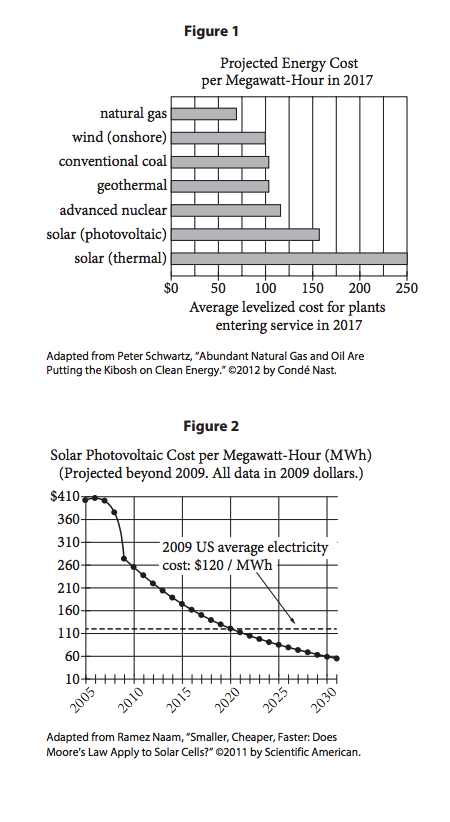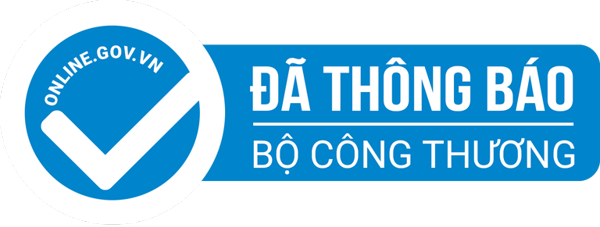New SAT Reading Practice Test 23
Bộ sưu tập: SAT Practice Test
Số câu hỏi: 1 câuSố mã đề: 1 đềThời gian: 1 giờ
202,903 lượt xem 15,605 lượt làm bài
Bạn chưa làm đề thi này!
This passage is adapted from Kevin Bullis, “What Tech Is Next for the Solar Industry?” ©2013 by MIT Technology Review.
Solar panel installations continue to grow quickly,
but the solar panel manufacturing industry is in the
doldrums because supply far exceeds demand. The
poor market may be slowing innovation, but
5 advances continue; judging by the mood this week at
the IEEE Photovoltaics Specialists Conference in
Tampa, Florida, people in the industry remain
optimistic about its long-term prospects.
The technology that’s surprised almost everyone
10 is conventional crystalline silicon. A few years ago,
silicon solar panels cost $4 per watt, and
Martin Green, professor at the University of
New South Wales and one of the leading silicon solar
panel researchers, declared that they’d never go
15 below $1 a watt. “Now it’s down to something like
50 cents a watt, and there’s talk of hitting 36 cents per
watt,” he says.
The U.S. Department of Energy has set a goal of
reaching less than $1 a watt—not just for the solar
20 panels, but for complete, installed systems—by 2020.
Green thinks the solar industry will hit that target
even sooner than that. If so, that would bring the
direct cost of solar power to six cents per
kilowatt-hour, which is cheaper than the average cost
25 expected for power from new natural gas power
plants.
All parts of the silicon solar panel industry have
been looking for ways to cut costs and improve the
power output of solar panels, and that’s led to steady
30 cost reductions. Green points to something as
mundane as the pastes used to screen-print some of
the features on solar panels. Green’s lab built a solar
cell in the 1990s that set a record efficiency for silicon
solar cells—a record that stands to this day. To
35 achieve that record, he had to use expensive
lithography techniques to make fine wires for
collecting current from the solar cell. But gradual
improvements have made it possible to use screen
printing to produce ever-finer lines. Recent research
40 suggests that screen-printing techniques can produce
lines as thin as 30 micrometers—about the width of
the lines Green used for his record solar cells, but at
costs far lower than his lithography techniques.
Meanwhile, researchers at the National Renewable
45 Energy Laboratory have made flexible solar cells on a
new type of glass from Corning called Willow Glass,
which is thin and can be rolled up. The type of solar
cell they made is the only current challenger to
silicon in terms of large-scale production—thin-film
50 cadmium telluride. Flexible solar cells could lower
the cost of installing solar cells, making solar power
cheaper.
One of Green’s former students and colleagues,
Jianhua Zhao, cofounder of solar panel manufacturer
55 China Sunergy, announced this week that he is
building a pilot manufacturing line for a two-sided
solar cell that can absorb light from both the front
and back. The basic idea, which isn’t new, is that
during some parts of the day, sunlight falls on the
60 land between rows of solar panels in a solar power
plant. That light reflects onto the back of the panels
and could be harvested to increase the power output.
This works particularly well when the solar panels
are built on sand, which is highly reflective. Where a
65 one-sided solar panel might generate 340 watts, a
two-sided one might generate up to 400 watts. He
expects the panels to generate 10 to 20 percent more
electricity over the course of a year.
Even longer-term, Green is betting on silicon,
70 aiming to take advantage of the huge reductions in
cost already seen with the technology. He hopes to
greatly increase the efficiency of silicon solar panels
by combining silicon with one or two other
semiconductors, each selected to efficiently convert a
75 part of the solar spectrum that silicon doesn’t convert
efficiently. Adding one semiconductor could boost
efficiencies from the 20 to 25 percent range to
around 40 percent. Adding another could make
efficiencies as high as 50 percent feasible, which
80 would cut in half the number of solar panels needed
for a given installation. The challenge is to produce
good connections between these semiconductors,
something made challenging by the arrangement of
silicon atoms in crystalline silicon.

The passage is written from the point of view of a
consumer evaluating a variety of options.
scientist comparing competing research methods.
journalist enumerating changes in a field.
hobbyist explaining the capabilities of new technology.
As used in line 4, “poor” most nearly means
weak.
humble.
pitiable.
obsolete.
It can most reasonably be inferred from the passage that many people in the solar panel industry believe that
consumers don’t understand how solar panels work.
two-sided cells have weaknesses that have not yet been discovered.
the cost of solar panels is too high and their power output too low.
Willow Glass is too inefficient to be marketable.
Which choice provides the best evidence for the answer to the previous question?
Lines 1-3 (“Solar... demand”)
Lines 10-15 (“A few...a watt”)
Lines 22-26 (“If so... plants”)
Lines 27-30 (“All... reductions”)
According to the passage, two-sided solar panels will likely raise efficiency by
requiring little energy to operate.
absorbing reflected light.
being reasonably inexpensive to manufacture.
preventing light from reaching the ground.
Which choice provides the best evidence for the answer to the previous question?
Lines 58-61 (“The basic... plant”)
Lines 61-62 (“That... output”)
Lines 63-64 (“This... reflective”)
Lines 64-66 (“Where . . . 400 watts”)
As used in line 69, “betting on” most nearly means
dabbling in.
gambling with.
switching from.
optimistic about.
The last sentence of the passage mainly serves to
express concern about the limitations of a material.
identify a hurdle that must be overcome.
make a prediction about the effective use of certain devices.
introduce a potential new area of study.
According to figure 1, in 2017, the cost of which of the following fuels is projected to be closest to the 2009 US average electricity cost shown in figure 2?
Natural gas
Wind (onshore)
Conventional coal
Advanced nuclear
According to figure 2, in what year is the average cost of solar photovoltaic power projected to be equal to the 2009 US average electricity cost?
2018
2020
2025
2027
1,307 xem
1 mã đề 1 câu hỏi
1 mã đề 1 câu hỏi
1 mã đề 1 câu hỏi
1 mã đề 1 câu hỏi
1 mã đề 1 câu hỏi

